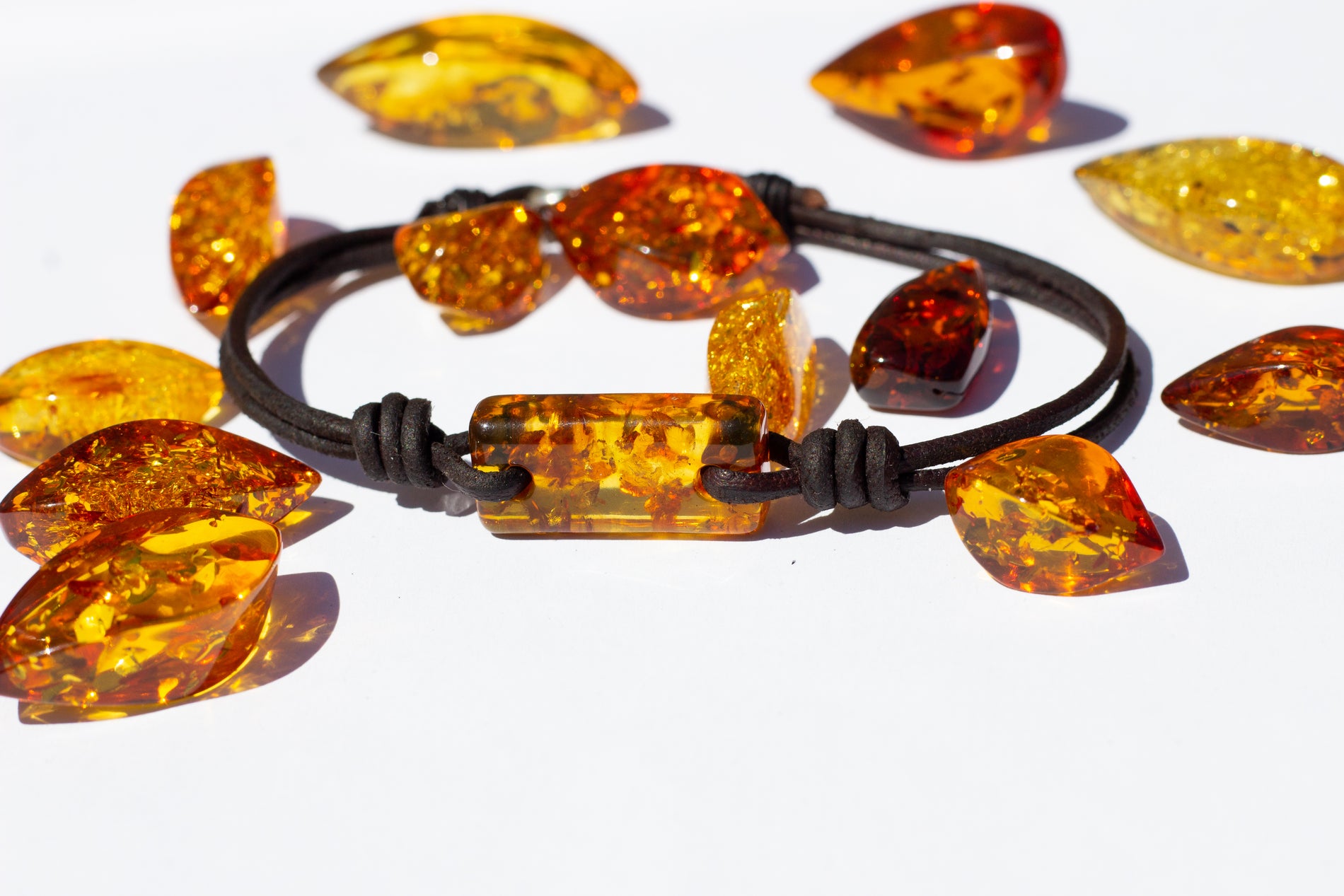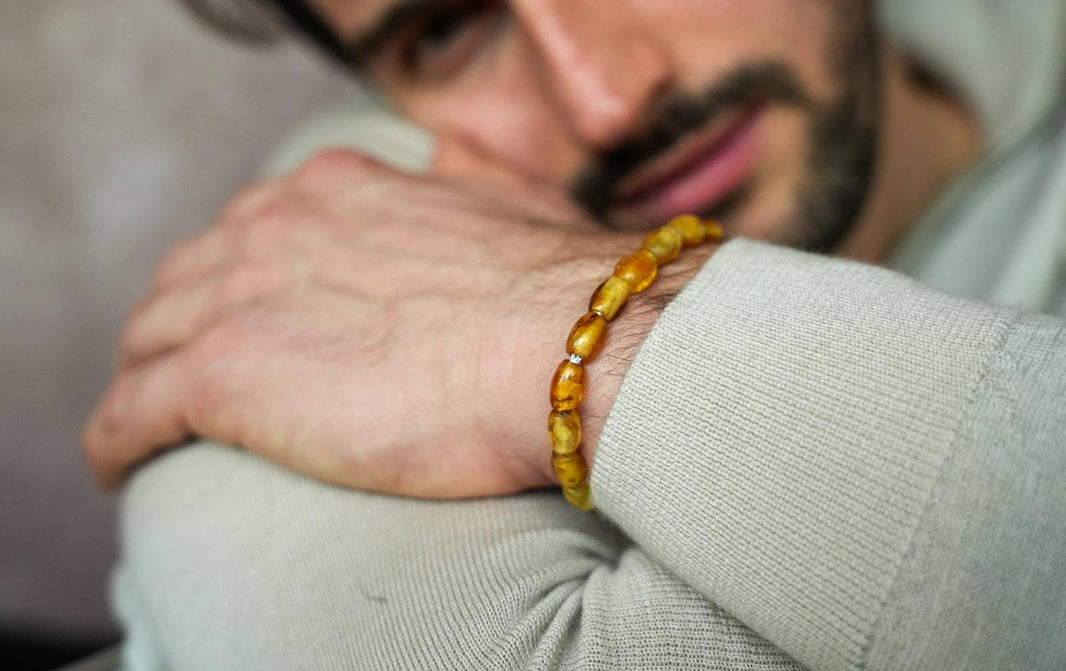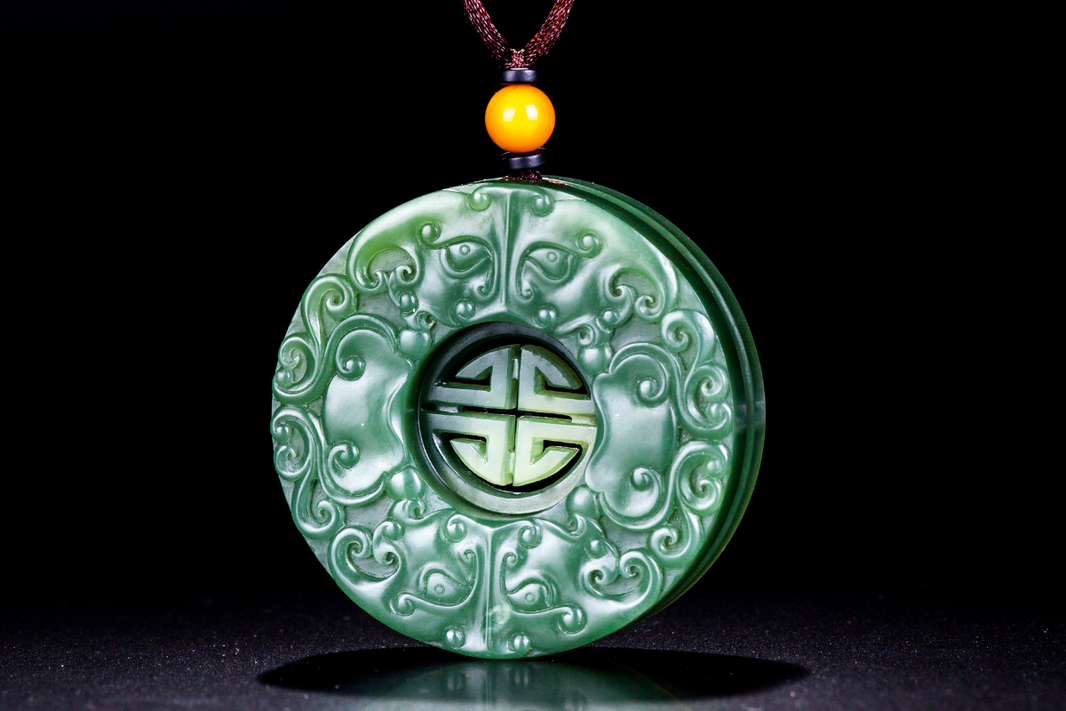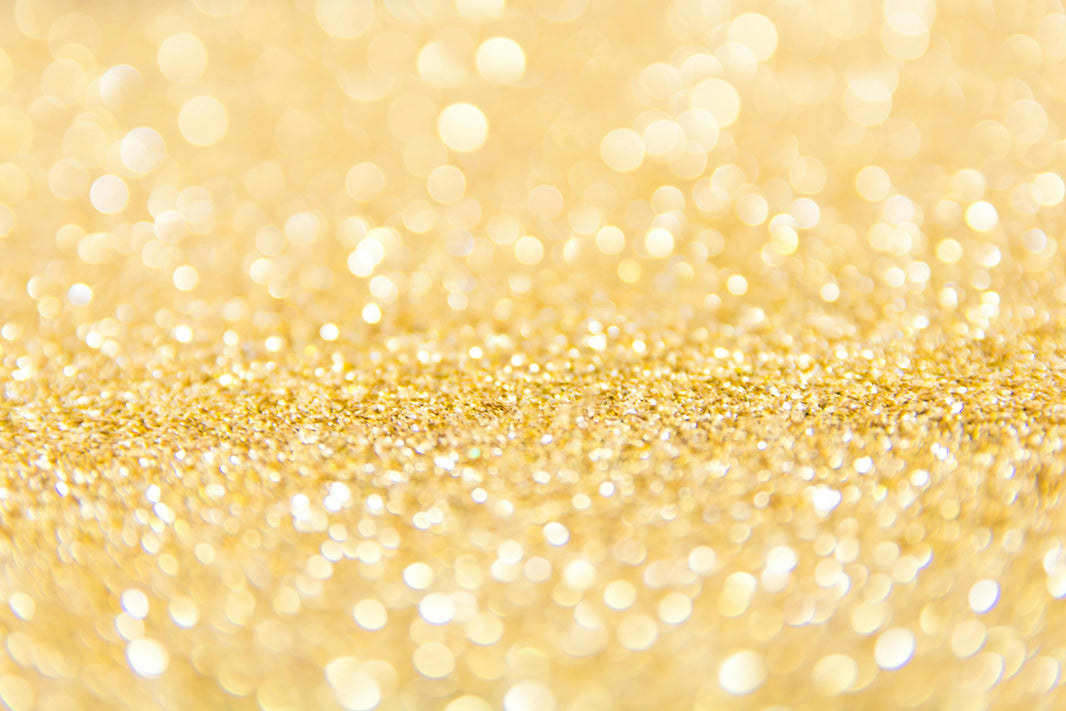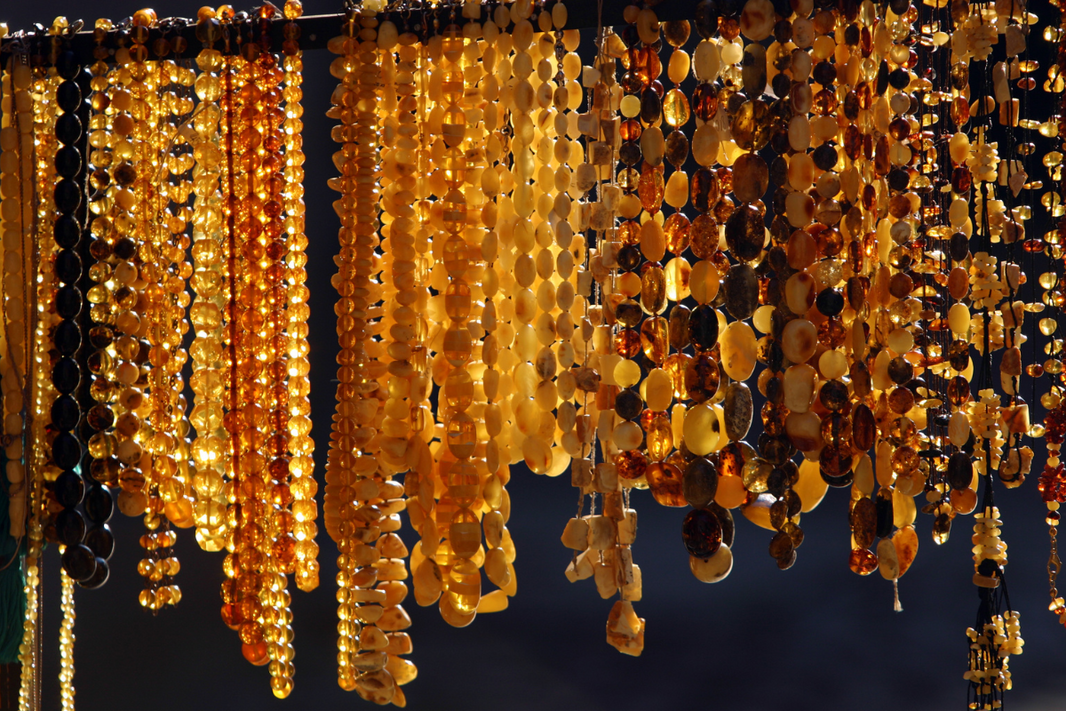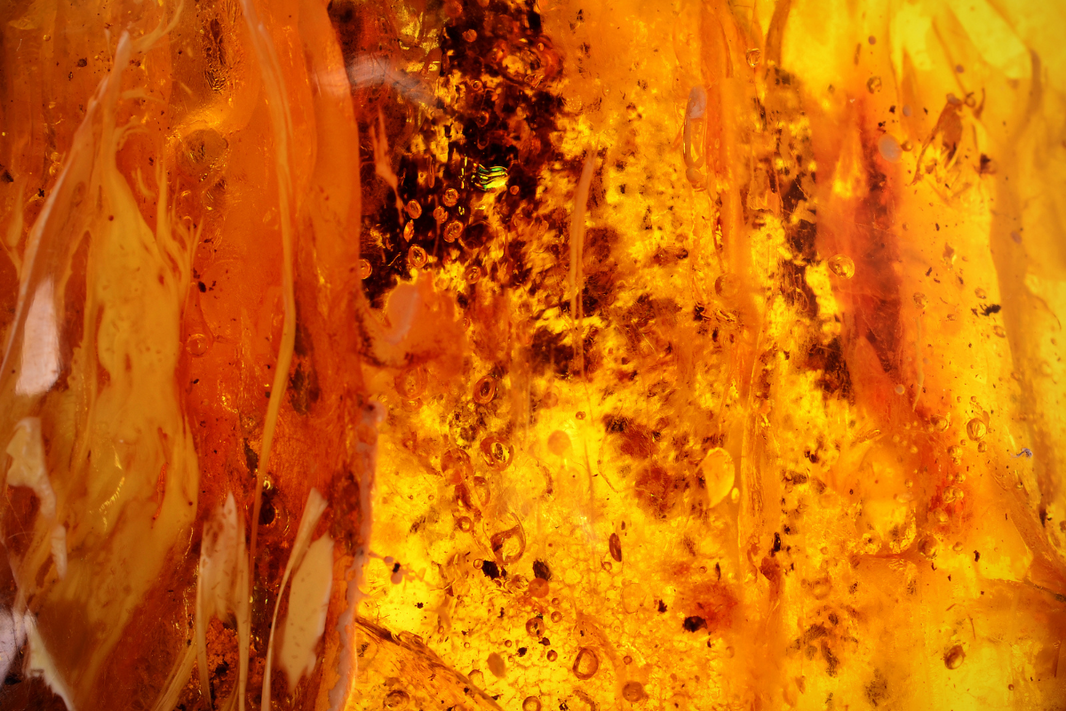Gemstones have long been a source of inspiration, wonder, symbolism and empowerment throughout human history.
Gemstones are either a) minerals with a crystalline structure (precious and semi-precious gemstones), b) inorganic non-crystalline mineraloids (opal, obsidian, moldavite), or c) organic gemstones (amber, dinosaur gembone).
The first (and most of the second group) are formed deep under the earth’s surface and must typically be mined or extracted whereas organic gemstones can often be found in materials such as amber on the beach and dinosaur bone in the desert.
So What Exactly Are Organic Gemstones?
Organic gemstones refer to a special group of natural materials that are unique in how they are formed. They are organic materials that have been mineralized – where organic material is replaced and infilled by chalcedony, opal, calcite, aragonite, pyrite or other mineral material over millions of years.
The similarity among organic gemstones is that they’re typically softer than their mineral cousins. But organic gemstones are among the oldest materials used in ornamentation by humans dating all the way back to the Stone Age.
The most common organic gemstones are:
-
Amber
-
Fossilised Coral
-
Dinosaur Gembone
-
Jet
-
Mary Ellen Jasper
-
Pearl
-
Petrified Wood
-
Fossilized Invertebrate Organisms or parts of organisms such as:
-
Sand dollar
-
Turritella agate
-
Ammonite
-
Ammolite (fossil shell material of ammonite)
-
Bryozoans
-
Crinoids
-
Stromatolite
What Are Gemstones Used For Today?
Gemstones are used extensively to create jewellery and adornments. Worn for their inherent properties and characteristics to empower, protect and inspire.
We can all use that extra bit of magic to help us to succeed in our careers, marriages, and personal lives. A constant connection to the positive vibrations of nature. Each gemstone carries the deep resonant energy of the earth accumulated over millennia, embuing each piece with a palpable symbolism that we can touch and treasure as mobile talismans.
Gemstones are quite interesting on their own with a myriad of properties and energetic characteristics, developing their unique stories over thousands of years of association with humans.
Amber
Called “liquid sunshine” because of its lightweight luminescent colour, amber is a fossilized tree resin that has been appreciated for its natural beauty since the Stone Age.
Mountains of archaeological data from central Europe show that our prehistoric ancestors used amber for both ornamental and religious purposes. The oldest piece discovered, a 30,000-year-old amulet, was found near Hanover, Germany and is evidence that amber was one of the first gem materials to be used in jewellery.
And they have been revered ever since, showing up in ancient trading records of the Phoenicians, Romans and Egyptians, and they also make a frequent appearance in Viking gravesites. Even Hippocrates, the father of healing, used amber to treat a number of diseases including delirium tremens.
The most popular variants of ambers derive from pine and coniferous trees. Most variants, however, are from now-extinct species because the resin was created several million years ago.
Where Is Amber Found?
Spanning from Alaska to Madagascar, Amber is found in several places across the globe. The largest deposits, however, are traced to Europe’s Baltic region, and Myanmar (previously known as Burma).
Coral

Coral gemstones are made from the fossilized remains of hard skeleton coral branches. They are made of quartz or calcite minerals and come in a variety of colours such as white, cream, or pink. The most popular colour, of course, is bright red.
Thanks to their alluring colouration and glossiness, coral gems have been used throughout history to make beads, jewellery and other decorative items. They have been found in ancient Egyptian and prehistoric European burials and was especially popular during the Victorian age.
Where Is Fossilised Coral Found?
Most fossilised coral is found in Indonesia, with other deposits found in the American states of Georgia and Florida. In 1979, Florida went so far as to designate agatized fossil coral as its state stone.
Dinosaur Gembone
Dinosaur gembone is made from the petrified remains of dinosaur bones that have been fossilised over the course of millions of years.
They come in a variety of colours that wholly depend on which minerals permeated the organic remnants. Calcite, Agate and similar types of minerals are behind the more vibrant types of gembone you can find in the wild.
Throughout the millennia, dinosaur gembone has been used as ornamentation thanks to its perceived magical properties. Some prehistoric cultures used it to imbue their hunters or soldiers with great power and strength, while others used it for important rituals that were associated with foresight or fortune-telling.
Where is Dinosaur Gembone Found?
Dinosaur gembone is very rare and can only be found in a few places. Unlike dinosaur fossils (which are usually found everywhere), most of the world’s high-quality dinosaur gembone originates from the Great Basin range in the west of the United States and dates from the Morrison Formation during the Upper Jurassic Era. Radiometric dating indicates that the Morrison Formation is between 148 million and 155 million years old.
Jet
Jet gemstone is an organic product of the decomposition of wood from millions of years ago. They are technically a type of coal, and are not minerals, but instead a mineraloid.
Jet gemstone usually comes in either black or dark brown, and is the reason behind the adjective “jet-black”. However, it sometimes contains pyrite inclusions which are of brassy colour and metallic lustre.
Where Are Jet Gemstones Found?
Jet gemstone is fairly ubiquitous and can be found in different locations such as Russia, India, Spain, Germany, France, Poland, the USA and many more.
The most well-known deposit of jet is found at Whitby, in England. This deposit was formed approximately 181 million years ago, and is a result of fossilized wood from species similar to the extant Chilean pine. Whitby Jet became world-famous after Queen Victoria used it as part of her mourning dress following the death of Prince Albert.
Mary Ellen Jasper

Mary Ellen Jasper is part organic gemstone and consists of red jasper and silver hematite. Jasper is a stromatolite, which are fossilised algae that are up to 3.5 billion years old, representing one of the earliest life forms on earth.
This primitive species is often credited with providing the oxygen-rich environment we enjoy today.
Where Is Mary Ellen Jasper Found?
It is found in the Mary Ellen Mine (where it gets its namesake) on the Mesabi Iron Range in northern Minnesota.
Pearl
One of the most famous organic gemstones, pearl, has been used as jewellery for centuries.
They are made by mollusc animals that are a type of marine species enclosed within a shell. These are typically clams, mussels and - most famously - oysters.
They are made when the soft tissue inside these creatures creates a mucus called nacre which then hardens, resulting in the creation of the pearl.
The colours vary from white, cream, light rose, cream rose, black, grey, bronze, blue, dark blue, green, dark green, purple, yellow, as well as violet.
Where Are Pearls Found?
Pearl bearing molluscs can be found in both salt as well as freshwaters. Freshwater pearls usually come primarily from China while saltwater pearls are found close to the shores of Japan, French Polynesia, and Australia.
Petrified Wood
Petrified wood is a fossilized gemstone that features a preserved natural wooden texture. However, all of the organic materials of the wood have been replaced by silica minerals (quartz, chalcedony, agate, opal) and sometimes by calcite, pyrite, or native copper.
Where is Petrified Wood Found?
Petrified wood, by its very nature, can be found all over the world. Mostly, it is found in sedimentary beds that are millions of years old.
Fossilised Invertebrate Organisms
Fossilised invertebrate organisms are a wonderfully diverse group with a fossil record spanning over 600 million years. They come in a variety of types, including:
-
Sand Dollar
-
Turritella Agate
-
Ammonite
-
Bryozoans
-
Crinoids
-
Stromatolite
What Were Organic Gemstones Used For?
Proto-bracelets made from bone links, stone and seashells gave ancient man its first mobile way to ward off evil and become one with the power of nature and animal spirits – 3,300 - 9,000 B.C.
As this tradition evolved, organic gemstones (due to their relatively softer nature than minerals) were the first-ever gemstones used by humans. They were carved into amulets and other adornments and for ritual ceremonies.
Vikings carved amber in the shape of animals for just this purpose – as a repository and source of power and protection and a symbol of their connection to earth and spirit.
Atlas brings back this timeless tradition of self-expression with our collections of organic, stylish fashion accessories that are designed to last.
Every gemstone carries a unique vibration as well as being aligned with different metaphysical properties. There is a wealth of information out there and we encourage everyone to explore – following your own instincts and the laws of attraction.
Explore Atlas’ selection of accessories featuring hand-carved and polished organic gemstones – which one will you connect with?

